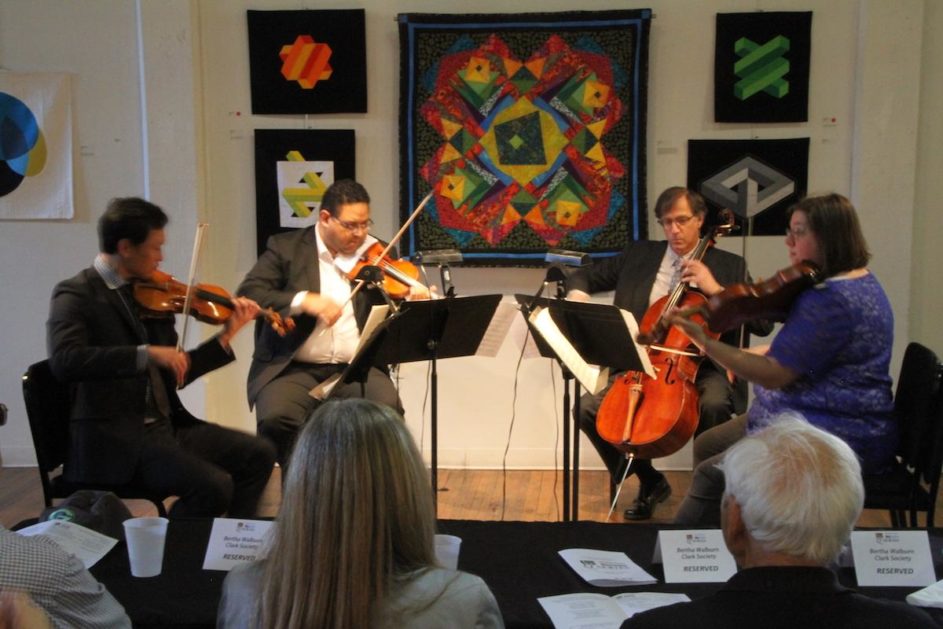When the Exposition Universelle of 1889 opened in Paris on May 6, Gustave Eiffel’s new iron tower was the star attraction. At 986 feet, it surpassed the 555-foot Washington Monument as the world’s tallest structure, a title it held until the 60-foot-taller Chrysler Building opened in New York in 1930.
But the attraction that drew in 875,000 people over the six months of the exhibition was the building housing a Javanese village, featuring the exotic music of the Javanese gamelan, which refers to both the collection of instruments that make up a gamelan ensemble and the type of music played.
One of the visitors who was transfixed by the gamelan’s sound and exotic rhythms was 26-year-old French composer Claude Debussy, who was trying to create a new sound world of his own. He wanted to break from the rigorous form and structure of the dominant Germanic classical music and create something distinctly French.
For the public used to hearing music produced mostly by string instruments, the multiple wood marimbas and metal xylophones, bells, gongs, drums, cymbals and flutes, all played in rhythmic patterns, sounded like a lot of banging clatter to the unsuspecting French ears accustomed to flowing, lyrical lines. But the music was also intoxicating. It had new sound shapes and colors. (Javanese gamelan music can be heard here.)
Debussy’s head was filled with music based on sound color, sensation and mood in a more relaxed form than the Germanic structure allowed. Parisians’ fascination with the new sounds of the Javanese gamelan they heard during the summer and early fall at the exposition gave him the opening to introduce the new sounds of his own music. In a kind of symbiosis, Java had opened French ears to new possibilities. Debussy seized the moment.
His new aesthetic would be based on watercolor sound-shapes that faded into each other.
In 1893, when Debussy published his “String Quartet in G Minor,” Op. 10, which the Knoxville Symphony Principal Quartet played on Wednesday at the Q Series concert at the Emporium Center, the convention of using Italian terms to describe how to play each movement in the music was also replaced with French terms.
The playing instruction for the first movement is marked “Animé et très décidé” (“Animated and very decisive”). The quartet’s playing of it was filled with brightness and enthusiasm just a little short of aggressiveness.
The second movement marked “Assez vif et bien rythmé” (“Lively enough and very rhythmical”), played with pizzicato plucking of the instrument strings, captured the rhythmic sound images the public had heard in the gamelan music. The third movement, “Andantino, doucement expressif” (“Slowly and gently expressive”), brought soft colors and smooth transitions between phrases. Its opening phrase, with Edward Pulgar’s violin and Kathryn Gawne’s viola playing almost meditative music, was gentle and lovely.
The fourth movement’s instruction was to start at a moderate speed, then animate little by little until it was played very fast and with passion. The Quartet – violinists Gordon Tsai and Edward Pulgar, cellist Andy Bryenton and violist Kathryn Gawne – played it brilliantly to an enthusiastic response from the audience.

KSO Principal Wind Quintet: Hannah Hammer, flute, at front left; Claire Chenette, oboe; Jeffery Whaley, French horn; Aaron Apaza, bassoon; Gary Sperl, clarinet.
The concert began with Beethoven’s “Quintet in E Flat Major, Op. 71,” originally written for a sextet of two clarinets, two bassoons and two French horns. It was played at the Q concert with different instrumentation by the KSO Principal Quintet of flute Hannah Hammel, oboe Claire Chenette, clarinet Gary Sperl, bassoon Aaron Apaza and French horn Jeffery Whaley.
The new instrumentation, which seems to be played more often now than the original scoring, gave the music a sense of being less dour and mournful, although it becomes brighter as it goes along.
In the Principal Quintet’s playing, the music has the same structure and arrangement, but the different voicing gave it more charm, including the still somewhat mournful first movement.
In the second movement, Apaza’s bassoon took off with the leading melody, with the other instruments playing mostly support. Then it switched to the oboe and flute, with Sperl’s clarinet taking the lead.
The third movement had a dance quality, with its marking of “Menuetto,” meaning in the slow, graceful tempo of a 3/4-time minuet. But the instruction also indicated a little faster than otherwise expected. The effect was bright and gracefully triumphant with scattered exchanges between the instrument and the horn finally getting to lead.
The fourth movement was filled with little galloping phrases and flowing arpeggios. As has become expected from the Principal Wind Quintet, the playing was vigorous and brilliant.
This was the final Q concert of this season. But the room was filled with people enjoying a lunch of salads and lemonade. And the music was the best dessert possible.

